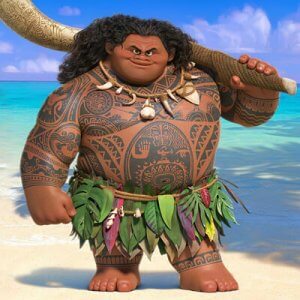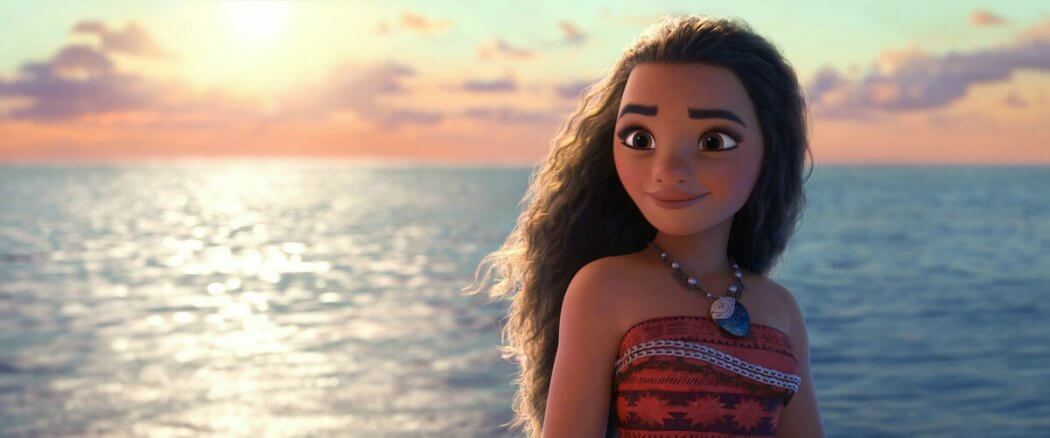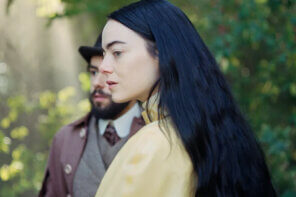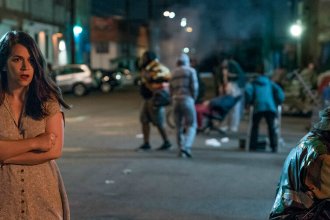Let’s make no mistake: Walt Disney studios isn’t hurting for recognition. Not only does it have arguably the most history of any Hollywood corporation, but it’s also now home to three of Hollywood’s most reputable and financially viable universes: Star Wars, Marvel, and Disney Pixar.
And yet, Disney still finds itself lacking in one key area: its traditional “princess movies.” I’m talking about the old classics of Snow White and Sleeping Beauty to the modern hits like Tangled and Frozen. See any similarities within that spectrum? You should; they’re all white. Aside from Pocahontas, Mulan, and The Princess and the Frog — the former two both having some troubling racial undertones and historical inaccuracies — the Disney princesses are largely dominated by white women characterized by their need to find love. Thankfully, Disney has moved toward stories of independence in films like Brave and Frozen, but there’s still a dearth of strong, independent women of color in this universe.
Enter Moana.
Same Old Disney, New Themes
Moana does itself a favor by establishing the narrative norms from the start of our heroine’s story. After a prelude to set up the journey — a Disney staple that never seems to get old — we learn Moana is the chief in waiting on the island of Motunui. Notice she’s not the queen in waiting; just the chief. We can consider Moana a princess movie because of her heiress status, but this is a world where women are just as capable of leading — and adventuring — as men. That’s a nice baseline to start with, even though it might not be as true to reality as a world like Mulan’s where women must fight to be recognized as equals.
T he film also stays true to Disney norms with the inclusion of flashy musical numbers and dazzling visuals. Touching on the latter before I dive into the former: Moana is the best a Disney movie has looked in a long time. There’s a Life of Pi-esque element to it, trading booming metropolises and lush forests for the sweeping grandeur of the sea. It can be easy to get lost in the colors and detail of films like Zootopia and Tangled, but viewers are forced to reckon with the opulence of Moana. When she’s out on a boat in the middle of the ocean, there’s nothing to do but wonder at how lush each wave and star appears.
he film also stays true to Disney norms with the inclusion of flashy musical numbers and dazzling visuals. Touching on the latter before I dive into the former: Moana is the best a Disney movie has looked in a long time. There’s a Life of Pi-esque element to it, trading booming metropolises and lush forests for the sweeping grandeur of the sea. It can be easy to get lost in the colors and detail of films like Zootopia and Tangled, but viewers are forced to reckon with the opulence of Moana. When she’s out on a boat in the middle of the ocean, there’s nothing to do but wonder at how lush each wave and star appears.
As for the music, Disney did well by scooping up Hamilton creator Lin-Manuel Miranda before he hit the A-list. Miranda hits the beats well in the traditional Disney-movie-standards: a song to establish the world (“Where You Are”) and the heroine’s theme (the Oscar nominated, “How Far I’ll Go”). But Miranda’s outdoes himself in the Polynesian influenced “We Know the Way.” Moreover, each song serves a special purpose. While the three aforementioned tunes round out Moana’s world, “You’re Welcome” allows Dwayne Johnson a chance to flex his vocal muscles and charisma and “Shiny” adds a touch of off-beat humor from Jemaine Clement’s Tamatoa. They’re for show more than plot, but each serves its purpose well in smoothing out what could have been rougher edges, specifically in Johnson’s casting.
Keeping It Simple
One of Moana’s best traits, aside from its visuals and musical numbers, has to be its simplicity. The story isn’t convoluted by any stretch of the imagination: Moana must find the demigod Maui and return the stolen heart of Te Fiti. That’s it. No tricks or hidden villains. No major twists or stops to meet extraneous side characters — think the stone trolls of Frozen. Moana’s simplicity really lets each element stand out as opposed to burying them under layers of unnecessary plot. Because of the lack of side characters, the audience is forced to dig deep into the performances of Johnson and Auli’I Cravalho, both of which became more complex and fulfilling as their relationship grows. It helps that screenwriter Jared Bush wrote two fully-formed characters, but Cravalho and Johnson mine the depths well. As mentioned above, the visuals and music are given an opportunity to stand out by the seeming lack of detail.
 Perhaps most importantly though, the audience never loses the heart of the story. Moana aches to adventure and expand her horizons, but she also seeks to restore and protect her island of Motunui. There’s a beauty in the way she finds happiness in her homeland, yet still recognizes true fulfillment cannot come from one place. Her physical acts of heroism are impressive; the level of maturity and wisdom she shows by restoring a sense of wonder to her people is genuinely touching. The distinction is subtle but clear, a testament to everyone involved in creating her character.
Perhaps most importantly though, the audience never loses the heart of the story. Moana aches to adventure and expand her horizons, but she also seeks to restore and protect her island of Motunui. There’s a beauty in the way she finds happiness in her homeland, yet still recognizes true fulfillment cannot come from one place. Her physical acts of heroism are impressive; the level of maturity and wisdom she shows by restoring a sense of wonder to her people is genuinely touching. The distinction is subtle but clear, a testament to everyone involved in creating her character.
A Brand New Island
Watching and digesting Moana is not only a joy, it’s also a relief. In the midst of the multi-faceted world of Disney films, it’s good to see creative minds there haven’t lost touch with the basics of a good story, namely a powerful heroine audiences can get behind.
Animated movies in this age of entertainment often struggle to straddle the line between adult and child entertainment. Moana doesn’t need to straddle the line, but instead stakes its claim on a new island. Just like the protagonist, Disney’s newest “princess movie” moves to establish its namesake as the first of her kind: a reminder of the past that successfully pioneers into unexplored territory.





